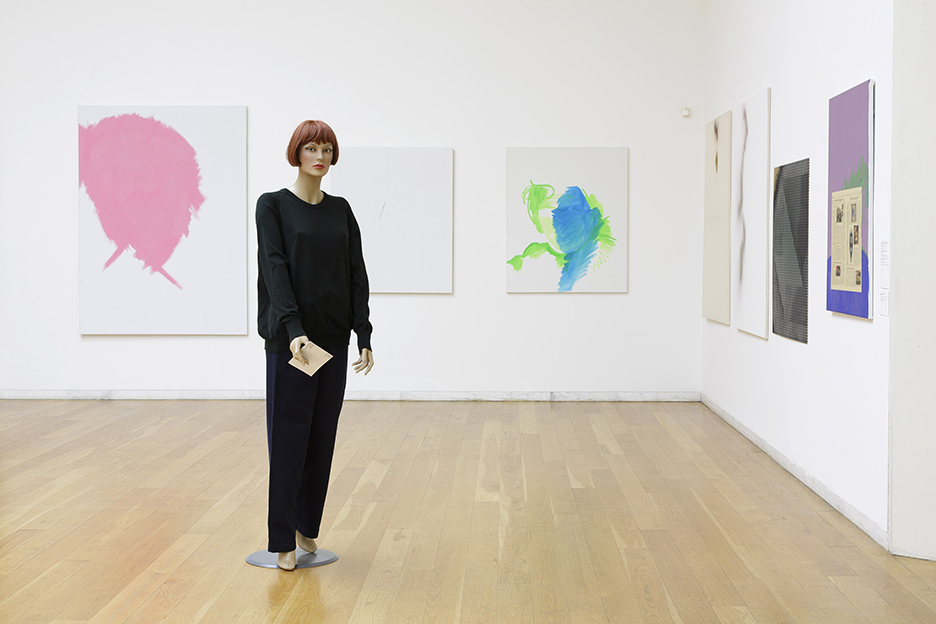Now online | MICHAEL KREBBER on Andy Warhol | Dia


Michael Krebber has spent the past forty years in pursuit of new routes into and out of painting, ever-conscious of claims for the medium's exhaustion yet committed to its endurance all the same. His conceptual approach—developed through studies with Markus Lüpertz and assistantships with Georg Baselitz and Martin Kippenberger—endeared Krebber to the Cologne art scene of the 1980s and ’90s, alongside peers like Cosima von Bonin, Jutta Koether, and Josef Strau. Like them, Krebber animates European neo-avant-garde strategies that came before, mounting an open-ended critique of art’s systems and processes through subtle visual cues. Yet his apparently diffident attitude—often likened to Baudelaire’s dandy or Melville’s Bartleby—renders Krebber unique. His self-effacing yet expansive definition of painting has admitted a wide range of formats, variously exhibiting patterned textiles, posters, and scores of canvases that bear just a few tentative marks. Those slight gestures embody what John Kelsey calls “an ongoing hesitation between repetition and interruption (or between having an idea and having no idea),” keeping the practice of painting alive while short-circuiting art world expectations for its dominance and decorum. Always in good humor, Krebber has in turn preoccupied art’s social imagination as a mercurial source of sly invention.
But if Krebber’s persona sometimes precedes him, his paintings reveal an abiding dedication to aesthetics and craft with their deft, even delicate, handling. “Could Krebber have predicted the possibility that his art could actually be touching?” asks Michael Sanchez. “That his joke-work, and the politeness of its delivery, can make one want to cry?” Krebber’s intellectual approach has long been laced with affect (he often speaks of his “embarrassment”), and his engagement with painting is ultimately as focused on its persistence as it is on its deconstruction (fitting, given his longtime post as professor of painting at Frankfurt’s acclaimed Städelschule). As Kelsey writes, Krebber’s tack is “to repeat and to stop painting in order to go to work on the wider system that makes painting what it is today, what it was yesterday, and what it might be or stop being tomorrow.”

Michael Krebber (b. 1954, Cologne) lives and works in New York. Recent solo exhibitions of his work have been held at Greene Naftali, New York (2024, 2021); Fondazione Antonio Dalle Nogare, Bolzano (2021); Museum Brandhorst, Munich (2019, with R. H. Quaytman); Kunsthalle Bern (2017); Serralves Museum of Contemporary Art, Porto (2016); Museum Ludwig, Cologne (2015, with R. H. Quaytman); CAPC Musée d’art Contemporain, Bordeaux (2012); Kölnischer Kunstverein, Cologne (2008); Secession, Vienna (2005); Städtische Galerie, Wolfsburg (2000); and Kunstverein Braunschweig (2000).
His work is in the collections of The Museum of Modern Art, New York; Centre Pompidou, Paris; The Art Institute of Chicago; Museum of Contemporary Art, Los Angeles; CAPC Musée d'art Contemporain, Bordeaux; Hamburger Bahnhof - Museum of Contemporary Art, Berlin; Museum Ludwig, Cologne; Aïshti Foundation, Lebanon; Museum Brandhorst, Munich; Hessel Museum of Art, Annandale-on-Hudson; RISD Museum, Providence; and Williams College Museum of Art, Williamstown. He was awarded the Wolfgang Hahn Prize by the Museum Ludwig, Cologne, in 2015 (with R. H. Quaytman).